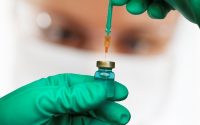Medication Accumulation in Gut Bacteria May Curb Drug Effectiveness, Alter Gut Microbiome
NEW YORK (Reuters Health) – Many common medications such as antidepressants, diabetes and asthma drugs can accumulate in gut bacteria, altering bacterial function and potentially reducing drug effectiveness, researchers say.
“It was surprising that the majority of the new interactions we saw between bacteria and drugs were the drugs accumulating in the bacteria, because up until now biotransformation (chemical modification) was thought to be the only way that bacteria affect drug availability,” Dr. Kiran Patil of the MRC Toxicology Unit, University of Cambridge, told Reuters Health by email. “We also were surprised to see the stark effect of bioaccumulation on bacterial metabolism and on community composition.”
“There will likely be very strong differences between individuals, depending on the composition of their gut microbiota,” he noted. “We saw differences even between different strains of the same species of bacteria.”
As reported in Nature, Dr. Patil and colleagues grew 25 common strains of gut bacteria and investigated their interactions with 15 structurally diverse oral drugs.
The team identified 70 bacteria-drug interactions, 29 of which had not been previously reported.
Seventeen of the newly discovered interactions could be ascribed to bioaccumulation – i.e., bacteria storing the drug intracellularly without chemically modifying it, and in most cases without bacterial growth being affected.
To gain additional insight, the team investigated the molecular basis of bioaccumulation of the antidepressant duloxetine. They found that duloxetine binds to several metabolic enzymes and changes the metabolite secretion of the affected bacteria.
When tested in a microbial community of drug accumulators and non-accumulators, duloxetine markedly altered the small molecules produced by the drug-accumulating bacteria, which the non-accumulators fed on; this caused an overabundance of consuming bacteria, thereby unbalancing the composition of the community.
Further, the team validated their findings in C. elegans; worms grown in bacteria that accumulated duloxetine behaved differently from those grown in bacteria that did not accumulate duloxetine.
Summing up, the authors state, “Together, our results show that bioaccumulation by gut bacteria may be a common mechanism that alters drug availability and bacterial metabolism, with implications for microbiota composition, pharmacokinetics, side effects and drug responses, probably in an individual manner.”
Dr. Patil added, “Next steps will be to take forward this basic molecular research and investigate how an individual’s gut bacteria tie in with differing individual responses to drugs such as antidepressants – differences in response, drug dose needed, and side effects like weight gain.”
“If we can characterize how people respond depending on the composition of their microbiome, then drug treatments could be individualized,” he said. “The clinical relevance will hopefully be clear in the next 2-3 years.”
Dr. Libusha Kelly of Albert Einstein College of Medicine in New York City commented on the study in an email to Reuters Health, “This work highlights the broad importance of microbe/drug interactions in drug bioavailability and the unrecognized potential for bioaccumulation of drugs to modify metabolite secretion in microbial communities.”
“As the authors note,” she said, “this study in bacterial isolates is only the first step towards understanding how bioaccumulation might influence drug metabolism and microbial community composition in the context of the far more complicated communities of microbes in the human body.”
“There are likely additional, cryptic, ways in which bacteria alter bioavailability and drug metabolism in the human body,” she said. “Furthermore, we do not understand how microbiome/drug interactions influence drug efficacy and safety in individual patients, which limits the clinical utility of our field currently. However, the authors uncover an exciting direction for future research.”
SOURCE: https://go.nature.com/3CxioHd Nature, online September 8, 2021.
Source: Read Full Article


